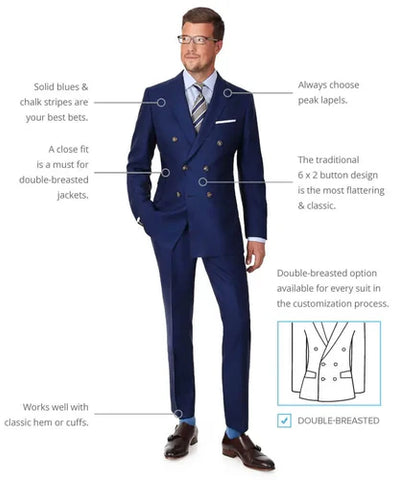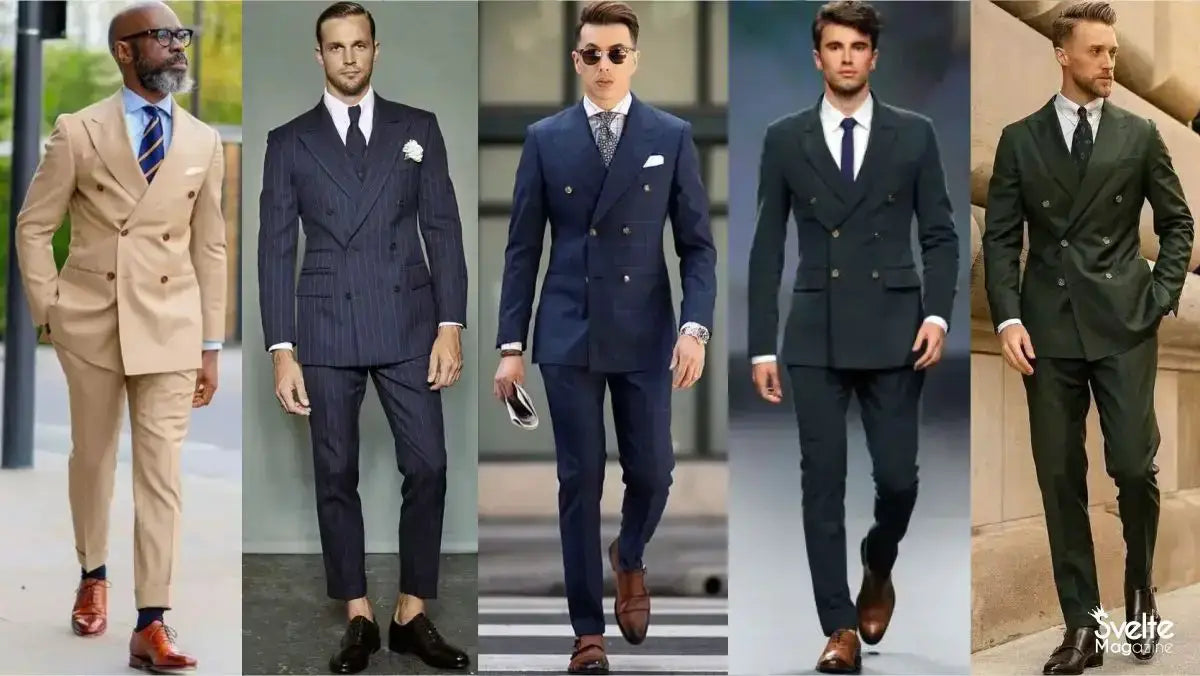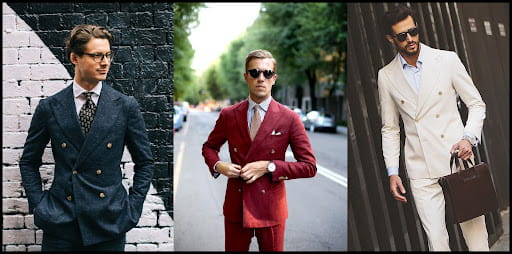The double-breasted suit, with its distinguished and classic appearance, has been a staple of men's fashion for decades. It exudes sophistication, making it a favorite choice for formal occasions, business settings, and stylish events. In this comprehensive guide, we will delve into the world of double-breasted suits, exploring their history, fit, styling options, and when and where to wear them. Whether you're a seasoned suit aficionado or new to this style, read on to master the art of the double-breasted suit.
History of Double-Breasted Suits
The double-breasted suit has a rich and intriguing history that dates back to the early 19th century. Its origins can be traced to military and naval uniforms, where the design served a practical purpose. The double-breasted front, with its overlapping panels and multiple rows of buttons, provided additional warmth and protection against harsh weather conditions.
As time passed, this military-inspired style made its way into civilian fashion. The double-breasted suit became a symbol of power and sophistication, associated with influential figures in business, politics, and entertainment. It exuded an air of authority and confidence, making it a popular choice for individuals who wanted to make a strong impression.
Anatomy of a Double-Breasted Suit

Front Closure
The defining characteristic of a double-breasted suit is its front closure. It consists of two columns of buttons, with one side overlapping the other. This unique configuration creates a visually striking, asymmetrical appearance that sets it apart from single-breasted suits.
Lapel Style
Double-breasted suits typically feature peak lapels or notch lapels. Peak lapels, which extend upward and outward, add a touch of formality and elegance to the suit. On the other hand, notch lapels are more versatile and can be worn in various settings, making them a popular choice for those seeking a balance between classic and modern style.
Buttons
The number of buttons on a double-breasted suit can vary. Common configurations include four buttons in total (two on each side), six buttons (three on each side), or even eight buttons (four on each side). The choice of button style, material, and positioning can significantly influence the overall look and formality of the suit.
Vents
Double-breasted suits may have side vents, center vents, or no vents at all. Side vents, which are slits at the sides of the jacket, are the most common choice. They provide ease of movement and contribute to a well-tailored fit.
Getting the Right Fit
Achieving the perfect fit is paramount when it comes to double-breasted suits. A well-fitted suit enhances your appearance and boosts your confidence. Here are some key fit considerations:
Shoulder Fit
The shoulder seams should align with your natural shoulder line. A well-fitted shoulder creates a clean and tailored look.
Chest Fit
The suit should close comfortably without pulling or wrinkling across the chest. A snug but not tight fit is ideal.
Waist Fit
The waist of the suit jacket should be tailored to your body shape, providing a flattering silhouette while allowing for ease of movement.
Sleeve Length
The sleeves of the suit should reveal a small portion of your dress shirt cuff when your arms are relaxed at your sides. This subtle detail adds a touch of sophistication.
Styling a Double-Breasted Suit

Styling a double-breasted suit is an art that allows you to express your personal taste and individuality. Here are some tips to help you master the art of styling:
Shirt and Tie
Choose a dress shirt and tie that complement the suit's color and style. Crisp white shirts and solid-colored ties are timeless choices that work well with most double-breasted suits. However, don't be afraid to experiment with patterns and textures for a more unique look.
Trousers
Pair your double-breasted suit with trousers in a matching or coordinating color. You can opt for flat-front or pleated trousers, depending on your preference and the formality of the occasion.
Footwear
Classic footwear options include oxford shoes and loafers, both of which provide a polished finish to your ensemble. The choice of shoes can influence the overall formality of your outfit.
Accessories
Elevate your look with well-chosen accessories. A pocket square, cufflinks, and a stylish belt can add personality and sophistication to your outfit. Make sure the accessories complement the color palette of your suit.
When and Where to Wear

Double-breasted suits are incredibly versatile and can be worn in various settings. Here's when and where they shine:
Business Meetings
Double-breasted suits are ideal for making a strong and professional impression in corporate environments. They convey authority, confidence, and attention to detail, which can be valuable in business settings.
Formal Events
For formal occasions such as weddings, galas, and black-tie affairs, a well-fitted double-breasted suit is a standout choice. Its timeless elegance and classic lines ensure you look impeccable and sophisticated.
Casual Elegance
While traditionally associated with formal settings, double-breasted suits can be adapted for more relaxed events. Pairing the suit with an open-collar dress shirt or even a turtleneck can create a stylish yet approachable look for upscale dinners or gatherings.
Conclusion
In the world of men's fashion, the double-breasted suit stands as a symbol of timeless elegance and style. It has evolved from its military origins into a versatile wardrobe staple suitable for a wide range of occasions. By understanding the history, anatomy, fit, and styling options of double-breasted suits, you can confidently embrace this classic and make it your own.








